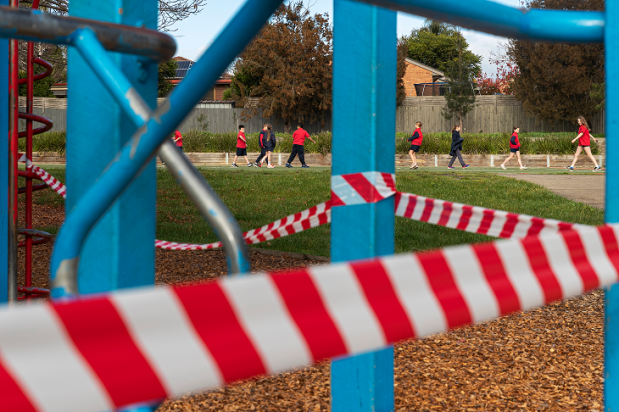The Culture of Schools and the Problem of Change was the first book I read when I was moving professionally from health to education. Written by Seymour B Sarason from Yale, it outlined his experiences of so-called educational innovations. The original book is old enough to be considered a ‘classic’, but Sarason kept writing into his 80s and his core assumptions did not change much.
Sarason’s starting point was that schools, and school systems, are subcultures of our society. He noted each school is highly differentiated because each one ‘possesses values, self-perceptions, goals, technical skills, training, and expectations which have a distinctive organisation or patterning’ – and that these patterns of life within schools have enough in common to identify the features of each one’s sub-culture.
Yet the latest Federal education review Improving Outcomes for All, reads as though people (teachers and families) are unthinking and unresponsive pieces on a chess board that can be moved by changing some core elements around them. It gives no recognition that schools and school systems are filled with human beings who live amongst social regularities that reveal what is important to them.
These regularities are like deciding how to dress when we are going somewhere. Of course, some of us don’t care. Others do. In our professional worlds, we tend to care not simply about how we dress, but what we think is good, helpful and essential to undertake our duties well.
How we define what ‘good’ looks like depends on our basic assumptions – but the point that Sarason insisted upon was that these assumptions leaked out into how we live in our different social contexts. It seems that the Improving Outcomes for All report has done a very shallow job in exploring the heart of teaching and learning in Australia at this level, by not identifying the basic assumptions that are dominant in our education system.
For example, it seemed the authors ignored previous work such as the 2014 Wiltshire and Donnelly review, and the more recent IPA report. Both raised issues that unless addressed, will make the proposed next innovations impotent. My summary of the critical issues, based on these previous reports and personal experience, is that:
- Teachers are rarely taught how to instruct well in the current training programs.
- The content that is essential to sequential instruction is absent or vague in the National Curriculum, K-10.
- The content that is in the curriculum ignores the best of the past and the best of our current knowledge and achievements, especially related to the (Judeo-Christian) Western tradition.
- It is assumed that teacher training and schools live under the pretence of neutrality, and I suggest this is because we have lost confidence in understanding who we are as human beings.
Thus, to quote Thomas Sowell (Social Justice Fallacies), ‘Cleverness is not wisdom, and artful insinuations are no substitute for factual evidence if your goal is knowing the facts.’ If the facts are that understanding humans involves more than biology and chemistry, then our training programs do not equip trainees to teach, which is beyond instruction. Instruction transfers information and skills; teaching involves consideration of what to do with that as a human being.
The nod to ‘fact knowing’ in this latest report is the phrase ‘evidence-based’. This is a nonsense if the educational questions being asked are reductionist or wrong due to wilfulness or ignorance about humanity. Yet these terms of ‘research’ and ‘the science’ are regularly thrown around in educational circles. Usually, the teacher appealing to ‘the research’ uses the term without understanding that social science of this kind has ‘neither the procedures nor the precision of science’ (again quoting Sowell). These educational ‘research’ activities are often correlational explorations of personal preferred assumptions about education.
The interesting exception may be that Minister for Education Jason Clare has perhaps given a pointer to explicit direct instruction with the initial deal made with Western Australia. But even there, what ‘explicit instruction’ means can vary from one educational location to another. I suspect it will not be the careful application of John Sweller’s research. And it cannot, with the current state of the National Curriculum, be built around the necessary sequential core knowledge described by those such as E.D. Hirsch.
This is seen in the nature of the content that is expected to be learnt in our country. As examples: Do we continue to teach the pantheism inherent in the sustainability curriculum emphases, as identified in the IPA report, only with better instruction? Do we continue to ignore the historical basis for universal human respect, or continue along critical identity theory lines? Do we ignore the issues around free will and civic life, or continue along the Fabian socialist tendencies espoused by the disciples of pioneers like George Bernard Shaw, who noted that a portion of the population was among the ‘detestable’ people who have ‘no right to live’ (also from Sowell) – or should that say the ‘deplorables’, or the ‘stupid’, or perhaps the ‘chicken littles’?
Despite the description of an apparently appropriate consultation process for this latest report, and the desire to spend even more money to complete the former Gonski report, this latest educational development program will predictably fail. At the very least it will underachieve. At worst, it may make matters even worse for our schools. That has been the pattern since the 1960s when equal admissions, based on race and other attributes, and forced outcomes, have been mandated into educational systems.
That is because such innovation is coming from ideologically driven surrogate saviours who define equality as equity, which means forcing an outcome on often unwilling participants, including the parents.
Two recent experiences in my world of education stress the lack of wisdom in this report. A principal friend noted that parents were now asking him, on interview, ‘Do you have separate boys’ and girls’ toilets?’ This is one of the new questions on the minds of families as they leave public schools towards (in my world) low-fee faith-based schools.
Similarly, after doing a workshop on John Sweller’s work recently, an experienced teacher simply noted at the end, ‘Why weren’t we taught this 20 years ago?’
The Improving Outcomes Report seems to be authored by people who believe that they can know all the information needed in each and every educational locale to insist on the outcomes that fit their vision of the good society. Yet the historical facts of enforced outcomes are that normally the people who are supposed to be helped end up worse off – just like when we closed schools during Covid.
This latest Federal Education innovation iteration is not a good vision at all, and the great ‘tell’ about this program is that those making the decisions will not suffer any consequences when they are shown to be wrong. This is even when the cost is borne heavily by those who know most deeply what is needed for their children – and that is the families. Let them decide. Give the money to them and let them choose. After all, it is their money and their children. Neither belongs to the State.
Got something to add? Join the discussion and comment below.
Get 10 issues for just $10
Subscribe to The Spectator Australia today for the next 10 magazine issues, plus full online access, for just $10.


























Comments
Don't miss out
Join the conversation with other Spectator Australia readers. Subscribe to leave a comment.
SUBSCRIBEAlready a subscriber? Log in